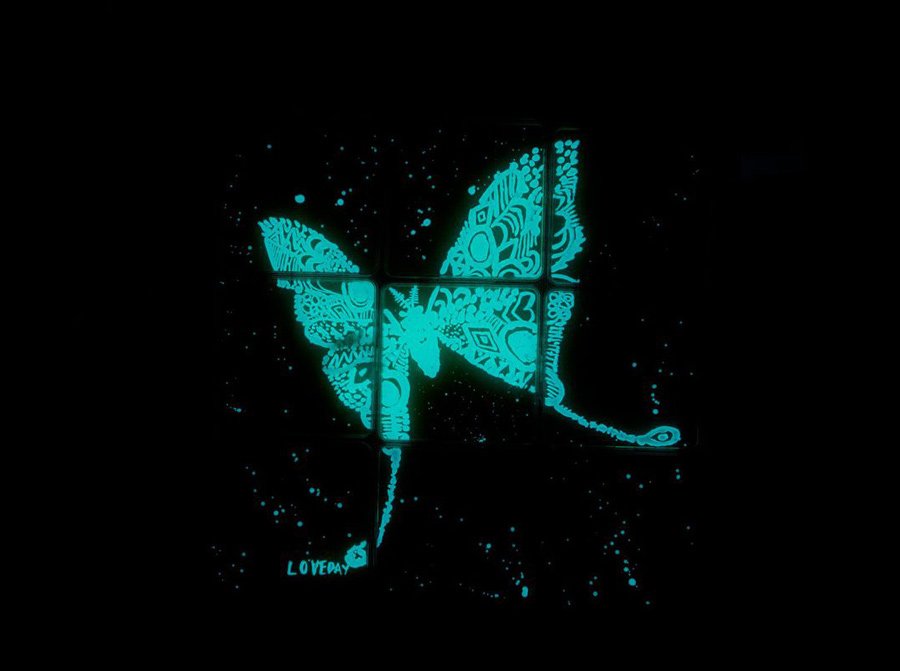By Geraldine Cremin / Australia
Click here to read the original article on mashable.com
Artists have created glow-in-the-dark artworks from a living organism as part of the World Science Festival in Brisbane, Australia.
Instead of paint or pencils, the artists are drawing with a type of marine bacteria known as Aliivibrio fischeri, which is usually found in the light organ of the Hawaiian bobtail squid. But put it on a brush, apply it to a petri dish canvas and then turn off the lights, and you can make some sweet science art.
Mashable Australia snuck into the the basement of the Queensland Museum to talk to the exhibition curator, University of Auckland microbiologist Siouxsie Wiles, as she prepared for the show.

Photo courtesy of Queensland Museum
"This bacteria is found in a tiny little squid, about 3 centimetres long. It lives in their light organ, which is the big bulbous part underneath the squid," she said.
Wiles was flanked by a number of local artists who were dipping their brushes in a cloudy solution that didn't seem to leave any mark on the petri dish canvases. Wiles explained the artists wouldn't have anything to show for their hard work just yet.
"Wherever the organism is placed on the jelly [of the petrie dish], overnight the bacteria will grow into a yellow bump and then when you turn the lights off, they glow in the dark."
Brisbane-based artist Sue Loveday was working on a nine panel painting of a butterfly when Mashable Australia visited. She said she doesn't usually paint with living organisms: "I've never worked with bacteria before so I jumped at the chance to do this ... It's invisible so there's a lovely randomness to it … It's back to playing with invisible ink."

